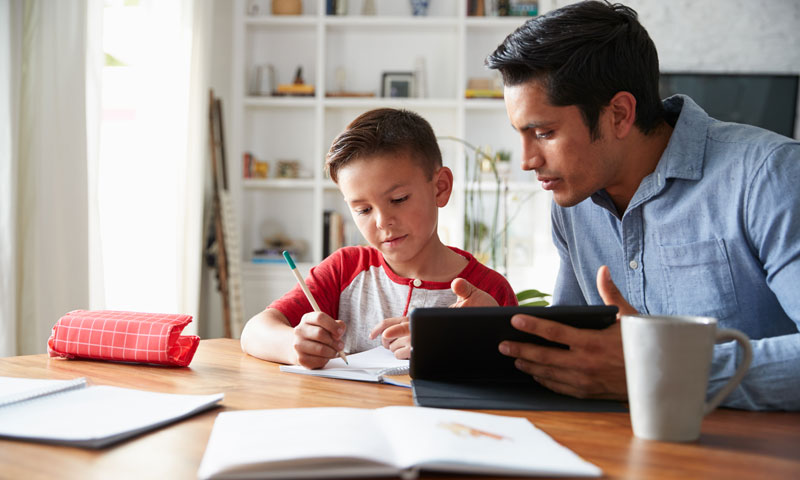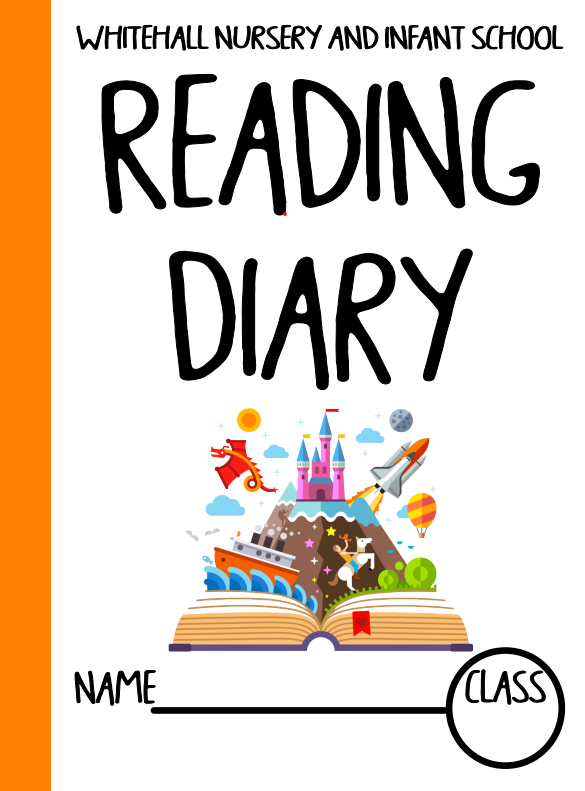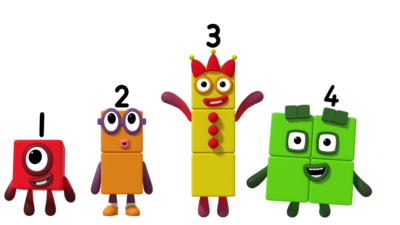Supporting learning at home

Your involvement in your child’s education is really important. You can make a big difference to your child’s development. There is support below with Maths, Reading (including Phonics - RML) and Handwriting. Try out some ideas below, and click on the links on the menu to get resources and activities for you to do with your children. This will show them they can be a learner wherever they are, not just in school!
Maths
National Numeracy has a useful website called the Family Maths Toolkit which has great ideas for helping your child engage with maths in everyday life.
Their top tips are:
- Be positive about maths! Never say things like “I can’t do maths” or “I hated maths at school”; your child might start to think like that themselves.
- Point out the maths in everyday life. Include your child in activities involving maths such as using money, cooking and travelling.
- Praise your child for effort rather than talent – this shows them that by working hard they can always improve.
There is lots of other helpful advice for families, too.
The website also has family maths activity ideas for children 5 years old and under and for children who are 6-9 years old (it also has activities for children 10-13 years old).
Also take a look at the Oxford Owl maths website.
The three books children take home
Once children are on RML reading books they get to take 3 books home with them
- RML Reading Book which is perfectly matched to where they are in their phonics learning - so they will be able to read this book without much or even any support (if they are not yet on books because they are learning letter sounds then they will bring home 'sound formation sheets'. If they are on ditties then they will be given a matching level ditty sheet to bring home).
- Challenge Book which is a book closely matched to their phonic level but with sounds they might not yet have learnt. That is why it is called 'challenge'. This book is for you to read with them, together - encouraging them to read as much as they are able and supporting them on the words or graphemes they do not yet know. Children who are learning letter sounds or doing ditties will take a lilac challenge book home - these books have no words and are designed to encourage language development and to help children to learn to get information and ideas from the illustrations.
- Reading 4 Pleasure Book - any library book - this can be fiction or non-fiction, picture book, chapter book even a cartoon book. This book is purely for them to enjoy looking at, sharing with you, reading where able and learning to love books. They may not be able to read any words in the book, but they have selected it because it interests them. Read it with them and share their excitement and enjoyment as you discover things together.
Reading at Home with the Reception Reading Diary

Reception Children will all have a reading diary in their first month of school. This is to encourage them to read with you at home and to continue their learning. You can support your child by reading regularly with them and to them and by encouraging them to use their diary every day.
There is a column for each day of the week where you can fill in the name of the book and record any help or guidance that was needed from you. Once a week they can fill in the work page, which might be a review of their favourite book, or a character or setting description or maybe something about how they felt reading the book.


To give the children an extra incentive to read as many books as possible, we have put a sticker chart at the back of the book. They can get one sticker for every 6 books they read. Once their chart is full they get a free book to take home to keep and READ!
Reading at Home with the Year 1 and Year 2 Reading Diary
Click on the video below to learn how to effectively use our new Reading Diary at home. Also look out for the brilliant Reading Race Challenge at the end of the book. Any of the books the children take home can count in their reading race.
There are only a few differences in the Year 1 and Year 2 diaries. Watch the video for the Year group your child is currently in as it gives you information about the relevant reading challenge for your child.
How can I help?
One of the ways parents can help their children is by reading to them and with them. Just 10 minutes a day can make a massive different.
Julia Donaldson (the author of The Gruffalo) gives some top tips to parents helping their children improve their reading: watch the video here.
Oxford Owl offers lots of helpful tips for helping children of different ages to improve their reading. See their top tips pages here.
Here are some tips for reading with your child:
- Set aside some time
- Find somewhere quiet without any distractions — turn off the TV/radio/computer
- Ask your child to choose a book — sharing books they have chosen shows you care what they think and that their opinion matters, and they are more likely to engage with the book
- Sit close together — encourage your child to hold the book themselves and/or turn the pages
- Point to the pictures if there are illustrations and relate them to something your child knows. Ask them to describe the characters or situation or what will happen next. Encourage them to tell you the story by looking at the pictures
- Encourage your child to talk about the book — talking about the characters and their dilemmas helps children understand relationships and is an excellent way for you to get to know each other or discuss difficult issues. Give your child plenty of time to respond. Ask them what will happen next, how a character might be feeling or how the book makes them feel
- Don’t be afraid to use funny voices — children love this
- And lastly and above all — make it fun! It doesn’t matter how you read with a child, as long as you both enjoy the time together.
(BookTrust also gives tips specifically for reading with children under 4.)
Here are some videos, from the BookTrust, which give examples of adults reading with children. Maybe you could copy some of the techniques.
Oxford Owl gives fun ideas you can use to help your child improve their reading. These ideas are mostly about games you can play with your child.
Listening to your child read
Lots of the ideas above are useful when you are reading to a child and when you are listening to a child read. Below is a video of someone listening to their child read. Notice how they don’t interrupt their child but wait for the child to work out what a word says.
Asking questions about the story
Asking questions about a story is an important way of helping children engage with a story and improve their own reading and writing.<1> Here are some example of questions you could ask about a story:
Before reading
- Is this book fiction or non-fiction? How do you know?
- Talk about the parts of the book: Where is the title/author’s name/illustrator’s name/publisher’s logo/blurb?
- What can you see on the cover?
- If any of elements in the cover illustration are mentioned in the title (a rabbit, for example): Can you find the word “rabbit” in the title?
- What does the title say?
- What do you think might happen in this book?
- Where’s the/is there a blurb? What does the blurb tell us?
During reading
- What is happening in the pictures?
- Ask simple comprehension questions about things that happened in the story like, Where is Ken’s cap?
- What has happened in the story so far?
- What just happened on this page? Is that what you expected to happen?
- What do you think will happen next?
- How do you think the story will end?
- What sort of character is…? Is s/he friendly/mean/kind?
After reading
- Ask simple comprehension questions about things that happened in the story like, Where is Ken’s cap?
- What happened in the story? Can you retell the story to me?
- What was your favourite part? Why?
- Did you like the book? Why?
- What sort of character was…?
- Why did the character do … [give an event from the story]?
Where can I get stories from?
You can find free stories in the school library, at a local library, and online.
Remember, the school library is open before school — from 8:30 to 8:45 — and after school — from 3:00 to 3:15. You can change your child’s book everyday and read with them at home.
You can find out about local libraries by clicking here. (Also see the children’s library at the Library of Birmingham.)
You can also find books to read online at the following sites:
- Oxford Owl (register, and then you can read books for free)
- MeeGenius (five free books to read online)
- International Children’s Digital Library
- Children’s Books Forever (books by the author Hans Wilhelm)
- BookStart (for younger children):
- Clifford the Big Red Dog stories
- ByGosh.com > Classic Stories for Children
- Library of Congress > Classic Books
- Children’s Books Online (lots of older books)
You can also buy books online, from retailers like Wordery, Waterstones, W. H. Smiths or Amazon (you can buy some cheap secondhand books on Amazon).
Another option is to visit a bookshop, like Waterstones in Walsall (or the amazing one in Birmingham on the Highstreet — it's a great building to visit, too!). Other shops that also sell books in Walsall are W. H. Smiths and the The Works
RML and how to use the ideas at home
RML (Ruth Miskin Literacy also called Read Write Inc) is our chosen scheme for teaching whole school phonics. You can click the link to access the parent page and watch videos to help you follow school practise. On the video there is a drop-down menu on the top left-hand corner, and you can select which part of the RML programme you want to watch (we don't use the writing or handwriting sections of the scheme).
You may notice your child using particular vocabulary when they speak about their reading and writing. These definitions may be of use:
- Phonemes are sounds. They are the smallest unit we can hear or speak in a spoken word.
- Graphemes are the written versions of phonemes. A grapheme may contain one or more letters.
In the word cat you can hear three phonemes c-a-t. You can write these three phonemes with three graphemes c a t.
Fred Talk
Fred Talk is a technique used by teachers to help children hear the sounds in words.
Fred, the frog puppet, can only speak in sounds. The children must put the sounds together to understand Fred. For example :
Fred says touch your l-e-g, b-a-ck, h-ea-d.
Fred Talk helps the children to read by blending the sounds into words; and it also helps children to spell by breaking down the words into sounds.
Try some of these simple ways of encouraging letter recognisition and word building with your child:
- Help your child to read signs, labels and instructions in the environment and home.
- Help your child to use Fred Talk so they can blend the sounds to form words.
It’s time for b-e-d. You need to s-l-ee-p.
Let’s go and b-r-u-sh our t-ee-th.
- Help your child to use Fred Talk so they can blend the sounds to form nonsense words e.g. com, dat, lod…
- Help your child to form and write letters and words by using chalk outside which can be washed away with the rain!
- Help your child to learn when you are out for a walk by using a stick in mud or sand to form letters and words.
- When they are relaxed in the bath help them to form the letters by tracing the shape with their finger in the bubbles or on the side of the bath with special washable crayons.
- Help your child to feel positive by encouraging them to point out sounds that are familiar in a word, even if they can’t read the whole word.
- Help your child to get used to letters by typing in words on the computer.
- Help your child to see words and letters on packaging when they are shopping and to guess what they say.
- Help them to say the words in Fred Talk when they put items in the trolley.
Holding a sentence
A good way to aid confidence in writing is to teach your child to hold a sentence. Choose a sentence containing simple words and say it aloud, ask your child to repeat it several times then write it down. The sentences can become more complex the more you do them.
Remember, praise every effort made and draw attention to correct spelling rather than errors.
Well done, you’ve spelt cat and sat correctly. That is brilliant!
Listen to how the sounds sound in standard English - click the link below.
http://flatsite-test1.s3-website-us-east-1.amazonaws.com/phonics/?id=ae#
 Letter-join is our school’s handwriting scheme and our pupils can log-in to the Letter-join website on iPads and tablets as well as desktop and laptop computers at home.
Letter-join is our school’s handwriting scheme and our pupils can log-in to the Letter-join website on iPads and tablets as well as desktop and laptop computers at home.
On the website you will find the same, easy-to-use handwriting resources that we use at school.

PC DESKTOP AND LAPTOP LOG-IN
Log in at www.letterjoin.co.uk and use the Desktop log-in option with these details:
- User name: wk8783
- Password: home
PC Browsers:
Letter-join will work on the following browsers on PCs/Macs:
• Google Chrome
• Firefox
• Safari
Do not use Internet Explorer.
IPAD AND TABLET LOG-IN
Go to www.letter-join.co.uk and use the Tablet log-in option with these details:
User name: wk8783
Swipe code
(starting at top left):
Tablet/iPad Browsers:
Letter-join will run on the following tablets:
• iPads running iOS7 and above through the Safari browser.
• Windows 8 tablets (8 inch and bigger) using the built-in browser.
• Android tablets (8 inch and bigger) using Google Chrome, Firefox or Opera.
 Choose a Classroom
Choose a Classroom
Once you are logged in, choose your child’s classroom. You can then use Letter-join’s resources and fun activities to reinforce the handwriting we teach at school. You can trace over the letters and words and play the games on your tablet.
We are limited to the number of users who can log-in to this account, so please do not share these log-in details.
Click on the yellow button and visit the 'Letter-join' website.
In the scheme each year group uses a different stage of handwriting:
- Reception use: Letter Join Print
- Year 1 use: Letter Join Air No-lead 8
- Year 2 use: Letter Join No-lead 8



